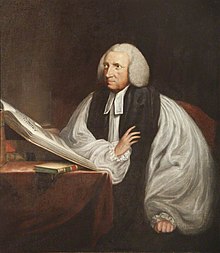A grammatical case is a category of nouns and noun modifiers which corresponds to one or more potential grammatical functions for a nominal group in a wording. In various languages, nominal groups consisting of a noun and its modifiers belong to one of a few such categories. For instance, in English, one says I see them and they see me: the nominative pronouns I/they represent the perceiver and the accusative pronouns me/them represent the phenomenon perceived. Here, nominative and accusative are cases, that is, categories of pronouns corresponding to the functions they have in representation.
In linguistics and grammar, a pronoun is a word or a group of words that one may substitute for a noun or noun phrase.
Singular they, along with its inflected or derivative forms, them, their, theirs and themselves, is a gender-neutral third-person pronoun. It typically occurs with an indeterminate antecedent, in sentences such as:
English grammar is the set of structural rules of the English language. This includes the structure of words, phrases, clauses, sentences, and whole texts.

A Dictionary of Modern English Usage (1926), by Henry Watson Fowler (1858–1933), is a style guide to British English usage, pronunciation, and writing. Covering topics such as plurals and literary technique, distinctions among like words, and the use of foreign terms, the dictionary became the standard for other style guides to writing in English. Hence, the 1926 first edition remains in print, along with the 1965 second edition, edited by Ernest Gowers, which was reprinted in 1983 and 1987. The 1996 third edition was re-titled as The New Fowler's Modern English Usage, and revised in 2004, was mostly rewritten by Robert W. Burchfield, as a usage dictionary that incorporated corpus linguistics data; and the 2015 fourth edition, revised and re-titled Fowler's Dictionary of Modern English Usage, was edited by Jeremy Butterfield, as a usage dictionary. Informally, readers refer to the style guide and dictionary as Fowler's Modern English Usage, Fowler, and Fowler's.
In Modern English, it is a singular, neuter, third-person pronoun.
In grammar, an oblique or objective case is a nominal case other than the nominative case and, sometimes, the vocative.

In the English language, there are grammatical constructions that many native speakers use unquestioningly yet certain writers call incorrect. Differences of usage or opinion may stem from differences between formal and informal speech and other matters of register, differences among dialects, and so forth. Disputes may arise when style guides disagree with each other, or when a guideline or judgement is confronted by large amounts of conflicting evidence or has its rationale challenged.
A possessive or ktetic form is a word or grammatical construction used to indicate a relationship of possession in a broad sense. This can include strict ownership, or a number of other types of relation to a greater or lesser degree analogous to it.
In Modern English, they is a third-person pronoun relating to a grammatical subject.

The English personal pronouns are a subset of English pronouns taking various forms according to number, person, case and natural gender. Modern English has very little inflection of nouns or adjectives, to the point where some authors describe it as an analytic language, but the Modern English system of personal pronouns has preserved some of the inflectional complexity of Old English and Middle English.
Relative clauses in the English language are formed principally by means of relative pronouns. The basic relative pronouns are who, which, and that; who also has the derived forms whom and whose. Various grammatical rules and style guides determine which relative pronouns may be suitable in various situations, especially for formal settings. In some cases the relative pronoun may be omitted and merely implied.
Possessive determiners are determiners which express possession. Some traditional grammars of English refer to them as possessive adjectives, though they do not have the same syntactic distribution as bona fide adjectives.
Personal pronouns are pronouns that are associated primarily with a particular grammatical person – first person, second person, or third person. Personal pronouns may also take different forms depending on number, grammatical or natural gender, case, and formality. The term "personal" is used here purely to signify the grammatical sense; personal pronouns are not limited to people and can also refer to animals and objects.
German pronouns are German words that function as pronouns. As with pronouns in other languages, they are frequently employed as the subject or object of a clause, acting as substitutes for nouns or noun phrases, but are also used in relative clauses to relate the main clause to a subordinate one.
In Modern English, she is a singular, feminine, third-person pronoun.
In Modern English, I is the singular, first-person pronoun.

The English pronouns form a relatively small category of words in Modern English whose primary semantic function is that of a pro-form for a noun phrase. Traditional grammars consider them to be a distinct part of speech, while most modern grammars see them as a subcategory of noun, contrasting with common and proper nouns. Still others see them as a subcategory of determiner. In this article, they are treated as a subtype of the noun category.

In English, possessive words or phrases exist for nouns and most pronouns, as well as some noun phrases. These can play the roles of determiners or of nouns.
The personal pronouns and possessives in Modern Standard Hindi of the Hindustani language display a higher degree of inflection than other parts of speech. Personal pronouns have distinct forms according to whether they stand for a subject (nominative), a direct object (accusative), an indirect object (dative), or a reflexive object. Pronouns further have special forms used with postpositions.



